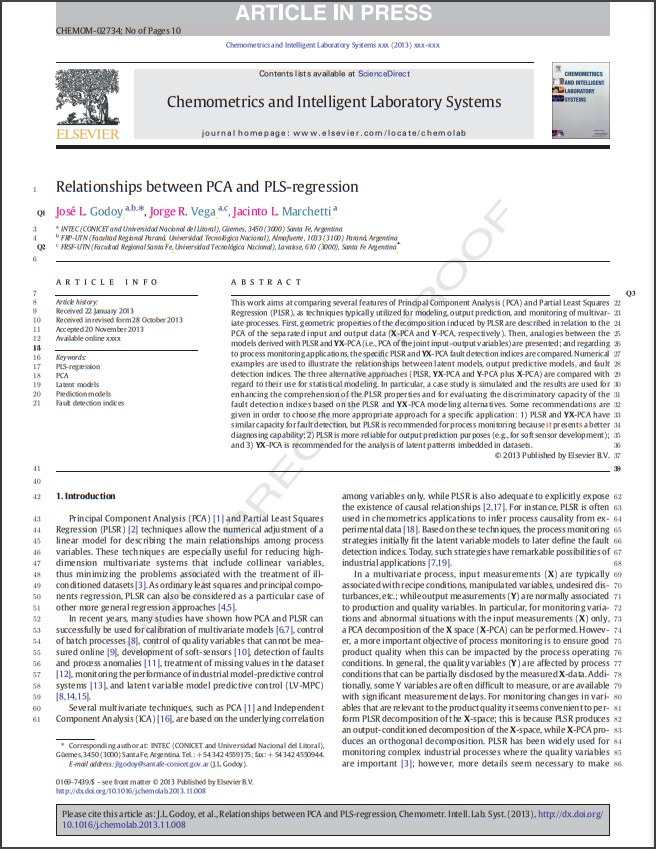Relationships between PCA and PLS-regression
Fecha
2014Autor
Vega, Jorge Rubén
Godoy, José Luis
Marchetti, Jacinto L.
Metadatos
Mostrar el registro completo del ítemResumen
This work aims at comparing several features of Principal Component Analysis (PCA) and Partial Least Squares Regression (PLSR), as techniques typically utilized for modeling, output prediction, and monitoring of multivariate processes. First, geometric properties of the decomposition induced by PLSR are described in relation to the PCA of the separated input and output data (X-PCA and Y-PCA, respectively). Then, analogies between the models derived with PLSR and YX-PCA (i.e., PCA of the joint input–output variables) are presented; and regarding to process monitoring applications, the specific PLSR and YX-PCA fault detection indices are compared. Numerical examples are used to illustrate the relationships between latent models, output predictive models, and fault detection indices. The three alternative approaches (PLSR, YX-PCA and Y-PCA plus X-PCA) are compared with regard to their use for statistical modeling. In particular, a case study is simulated and the results are used for enhancing the comprehension of the PLSR properties and for evaluating the discriminatory capacity of the fault detection indices based on the PLSR and YX-PCA modeling alternatives. Some recommendations are given in order to choose the more appropriate approach for a specific application: 1) PLSR and YX-PCA have similar capacity for fault detection, but PLSR is recommended for process monitoring because it presents a better diagnosing capability; 2) PLSR is more reliable for output prediction purposes (e.g., for soft sensor development); and 3) YX-PCA is recommended for the analysis of latent patterns imbedded in datasets.
Colecciones
El ítem tiene asociados los siguientes ficheros de licencia:


